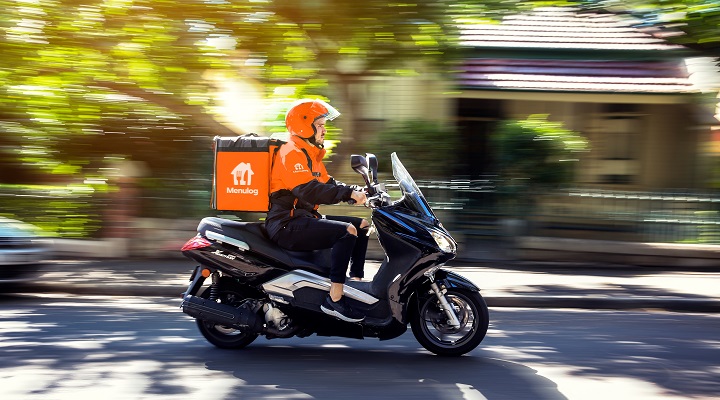Headquartered in Amsterdam, Just Eat Takeaway.com is one of the world’s biggest food delivery companies, operating food delivery platforms in 23 countries across Europe, the UK, Canada, Israel, Australia and New Zealand. But in the company’s recent quarterly earnings report covering the October-December 2020 period, CEO Jitse Groen had reason to single out Australia. For the second quarter in a row, Australia, where Just Eat Takeaway.com operates Menulog, was the company’s fa
17;s fastest growing market overall. In Q4, orders were up 166 per cent year on year.
“If we look back at 2020 overall, we saw strong double-digit growth coming through the business in Q1, then Covid hit and converted double-digit growth into triple-digit growth,” Morten Belling, Menulog’s managing director, told Inside Retail.
Food delivery was already projected to become a US$200 billion global industry before the Covid-19 pandemic, but with millions of people working from home and unable to dine out in restaurants due to lockdowns, the market has exploded.
A market research report from Technavio suggests the industry will grow at a CAGR of over 12 per cent over the four-year period to 2024, up from just under 8 per cent growth in 2020.
But Covid-19 alone doesn’t explain Menulog’s current growth, since orders have continued to increase even after lockdowns lifted across most of Australia and the start of summer, when food delivery platforms typically see demand fall.
“Our business is quite seasonal,” Belling said. “When it’s dark, cold and rainy outside, people order more takeaway in general.”
So what explains Menulog’s current growth? For starters, Snoop Dogg.
https://www.youtube.com/watch?v=3gDlhRmsq94
Delivery like a ‘G’
Belling credits Menulog’s new campaign led by US rap legend Snoop Dogg with generating a lot of positive talk about the brand in 2020, which helped drive brand awareness and ultimately increase orders.
“Our brand is a bit edgier than it has been in the past,” he said.
Founded in Australia in 2006, Menulog had developed a reputation as a “family brand”, according to Belling. Bringing on Snoop Dogg as a new brand ambassador and sponsoring the South Sydney Rabbitohs NRL team has helped the platform reach a broader audience, from Gen Z to Baby Boomers.
“People are talking about us a lot more. At every [external] meeting, there’s talk about Snoop in particular,” he said.
At the same time, Menulog has invested heavily in its breakfast, lunch and late-night offerings, launching a $1.99 delivery offer for off-peak dining and becoming the price leader in the market.
“We hadn’t tapped into those occasions before, and that’s where we’re seeing fastest growth at the moment,” he said.
This has helped Menulog gain back much of the market share it lost following the arrival of global competitors like UberEats and Deliveroo around five years ago.
According to Google, searches for Menulog have increased steadily over the last year.
“That’s a key indicator of us gaining more market share,” Belling said.
Menulog’s search volume in Australia (blue) compared to UberEats’ search volume (red) over the past five years. Image: Google
Competitive landscape
But while consumer demand for food delivery has never been higher, there are also more players competing for a slice of the market. In addition to UberEats and Deliveroo, Menulog now has to contend with the likes of DoorDash, Easi and restaurants’ own delivery networks.
Belling says competition is good for business – “It keeps you on your toes,” he said, “and enables us to increase the overall category” – but it also makes acquiring and retaining customers challenging.
“There’s a lot of competition around winning the customer over, and one of the key drivers there is price leadership,” he said. “Consumers are very price focused.”
Belling aims to capitalise on Menulog’s current momentum to continue to drive growth in 2021 and beyond.
His top priorities include: building brand awareness, focusing on regional expansion, adding new restaurant partners, investing in price leadership and non-dinner occasions and driving growth in New Zealand.
Menulog currently has around 500 restaurant partners in New Zealand compared to around 25,000-30,000 restaurant partners in Australia.







